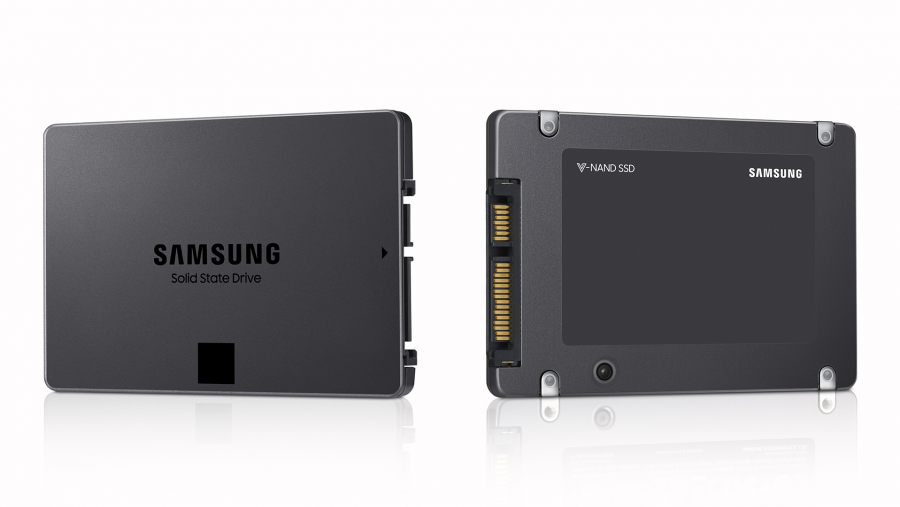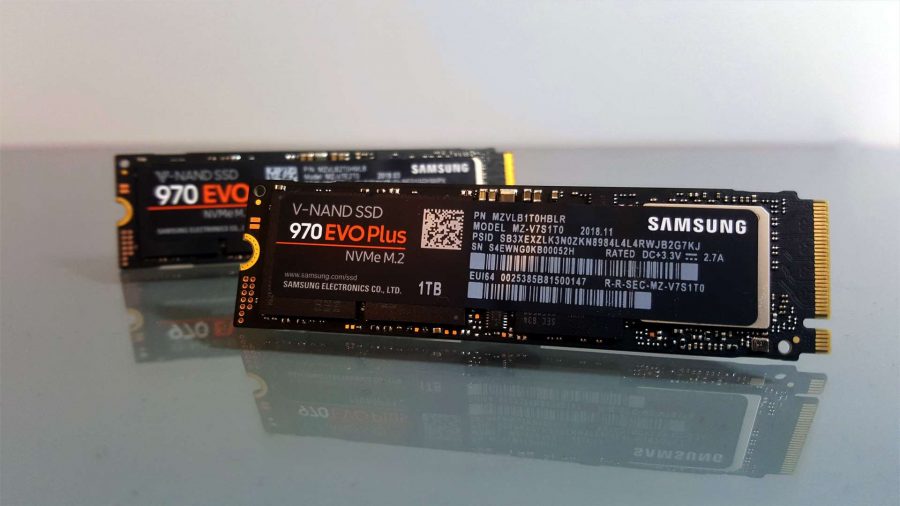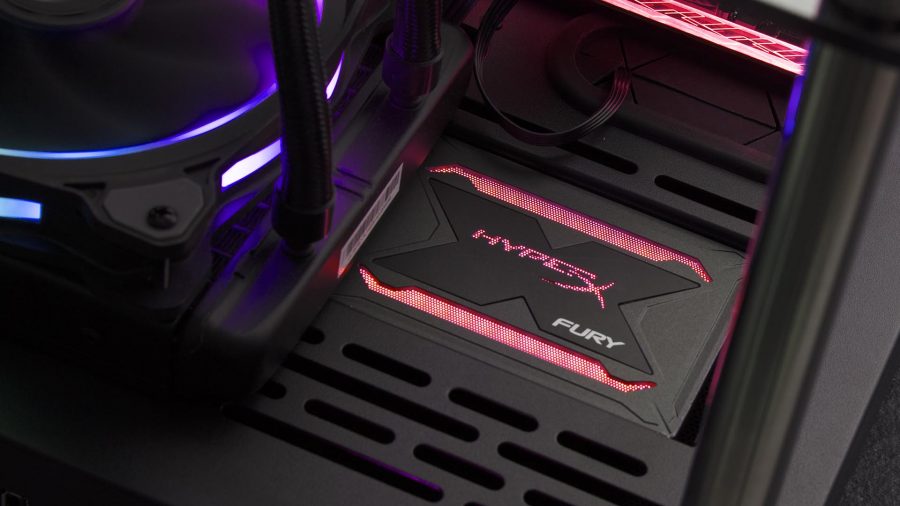How To Install Additional Ssd In Pc
Even the best gaming PC will slow to a crawl eventually, whether your system has simply been standing the test of time or you've been stuck on an old hard drive. Fortunately, you can escape the sluggish confines of a hard drive pretty easily if you know how to install an SSD.
SSDs are becoming increasingly affordable and progressing towards a price parity with their disk-based counterparts. Even so, hard drives still hold the crown for best value per GB, especially for PC users with slower internet speeds that don't have the luxury of regularly uninstalling. Those that can justify the premium of an SSD, however, will see that the newer technology provides an astronomical leap in performance, loading apps, games, and Windows significantly faster. Upgrading your RAM capacity with a set of the best gaming RAM can drastically improve OS performance, too.
This might sound tempting, but things aren't as quite as simple as buying the best SSD for gaming available and plugging it in. There are compatibility issues that you need to watch out for and hurdles to navigate when it comes to swapping out your main system drive. But with your trusty screwdriver in hand, we'll walk you through everything you need to know about SSD installation.
To prepare, it's best to have the instructions that came with your best gaming motherboard at the ready. If this has long gone, then you could always search the make and model to see its layout. Failing that, simply check the motherboard's markings to see which is right for you.

1. Which SSD should you choose – 2.5-inch or M.2?
Regular hard drives (otherwise known as hard disk drives or HDDs) are quite chunky at 3.5-inches, often requiring large cages to fit multiple drives in a single system. Hard drives work by using a physical arm to find the data on a disk, much like a record player, which takes time and is often more fragile than modern alternatives.
The first wave of SSDs (otherwise known as solid state drives) are much thinner at 2.5-inches, allowing you to fit many more devices in a fraction of the space. Thanks to something called NAND Flash memory, the pathway to your data is much more direct, making for faster read and write speeds.
The latest and greatest development to this technology is the M.2 SSD, which scales down the form factor even more. Without getting too complicated here, these come in five different lengths and two different types: SATA and NVMe. If your motherboard supports M.2 SSDs, which it usually displays on the lower half of the board, check which size and type are compatible before purchasing. Otherwise, you could buy a PCIe adapter to slot it in next to the graphics card.
If you want the fastest possible speeds and your motherboard can handle it, NVMe SSDs are the way forward with the lowest latency. SATA M.2 SSDs have the same specifications as 2.5-inch SSDs, but are guaranteed to be better than most because they only use the best version of the connector. If your system doesn't support M.2, however, then 2.5-inch SSDs provide a more direct upgrade to hard drives using the same connector, meaning compatibility isn't much of an issue beyond fitting it into your case.
Please note: M.2 SSDs can be quite fiddly in the dedicated slot. They require smaller screws than 2.5-inch SSDs (M2 x 3mm screws), and therefore a smaller screwdriver to install them. You won't find these screws in the M.2 SSD box as they usually come with the motherboard. The problem here is that if they don't come preinstalled in the motherboard itself, the bag it sits in is often lost, requiring you to buy a new one before moving onto installation.

2. Choose the right capacity
Moving from one storage drive to another can be a hassle if you don't go for one with equal or greater capacity. Given that SSDs are more expensive per GB, those of you upgrading from a hard drive are likely going to deal with a drop in the space you have available. The first thing you need to do is compare how much space you're using in your current drive compared to what you need. Bare in mind that a lot of new games, such as Cyberpunk 2077, are now recommending you install them onto an SSD, so you might want to consider a larger capacity SSD.
If you want the fastest possible speeds, NVMe SSDs are the way forward
In this example we're going from a 1TB HDD to a 750GB SSD. Right away that looks like we're in trouble, but of that total hard drive capacity we're only using around 340GB. We know that, with a little partition magic, we'll be able to clone the entire installation as is without much effort.
But if we were shifting to a 250GB SSD, we'd have to do some heavy housekeeping to make things work. In this case, you would need to uninstall programs and games that you don't regularly use by right-clicking the Windows logo in the bottom left of your screen and heading into Apps and Features. Once you've done this, it'd be best to back up and remove any important files from the drive you're replacing onto an external device or a cloud service.
If you're struggling to track down deletable data, then a storage analysis app is your best friend. WinDirStat, for example, will check your storage drives and produce a pretty colour chart, grouping file types together to give you a clearer view of what is stored on your drive and where.

3. Select your SSD's speed
All storage drives are rated based on their read speed (how quickly you can access existing data) and write speed (its ability to store new data). The type of connector plays a big part in how fast an SSD can be, with NVMe M.2 SSDs currently sitting on the throne by quite a margin. NVMe drives with PCIe 4.0 support are the fastest, but you'll need to ensure your rig is compatible before dropping money on one. For Intel, only its newest Rocket Lake-S CPUs support the standard, whereas with AMD, any of its 500 series motherboards support it.
Higher speeds are always desirable, but they don't come cheap. To stay within your budget, you might need to make some sacrifices, prioritising either capacity or speeds depending on your needs. If it makes your decision a little easier, multiplayer gamers will always need to wait for the slowest person in the lobby, anyway, and you're unlikely to be that person if you run your game from an SSD.
With speed, capacity, and compatibility in mind, now you're ready to check out our list of best SSDs to see which is right for you.

4. Installing a new SSD
Now, with your SSD in one hand and your screwdriver in the other, let's get started. You don't need to touch your current drive unless it is getting in the way, so your sole focus is on the new SSD.
To install a 2.5-inch SSD, all you really need is a standard screwdriver to fasten it (the most common places are in the hard drive cage or a dedicated space in your case, such as a bracket behind the motherboard), and both a SATA power cable and SATA data cable to hook it up. There's no concrete rule on which way around to do things, but you might find it more accessible to plug the wires in before securing the drive, depending on how you manage cables.
There's no concrete rule on which way around to do things
If you're adding to your collection of hard drives, you should already have a power cable coming from your PSU around that area. You might need to hunt around in your spare boxes for a new data cable, as these often come with the motherboard and not the new SSD, but these are pretty easy to get hold of if you get stuck. Plug the other end of the data cable into the motherboard, and you're all ready to go.
If you're being fancy and upgrading to a super speedy NVMe SSD, then the steps on how to install an M.2 SSD are easy too,provided you have a small enough screwdriver and the right screw to lock it in – this also comes with the motherboard.
When you slot the M.2 SSD into the socket, it will sit at an angle until you pin it down with the screw. Higher end motherboards even come with a shield that covers the drive with claims that it dissipates heat, but realistically these just help neaten the look of your system. Most motherboards will come with at least one M.2 slot, if not more, but those without can opt for a PCIe adapter instead.

5. Replacing your Windows drive
Setting up a new SSD in your PC as your main system drive can either be a cathartic fresh start with a clean copy of Windows, or mean copious amounts of housekeeping to move all your files over, redownload your Steam library, and catch up on all the latest updates. Fortunately, a little program called Macrium Reflect can get you back to gaming in no time, provided you've installed an SSD with enough space.
Setting up a new SSD in your PC can be a cathartic fresh start
Once you've downloaded and installed Macrium Reflect, it will analyse your system and identify all the attached drives and relevant partitions. Your boot drive contains the C: partition, but if you want to double check, right-click the Windows icon in the bottom left of your desktop and click Disk Management. This will also display the drives in your PC and you can match them up by right-clicking on a drive and checking its Properties.
You need to clone all the partitions on your old Windows boot drive to ensure you get a complete copy. This is as simple as selecting the drive you wish to clone, clicking Clone this disk, and choosing your new SSD as the disk to clone to in the window that pops up.
Your new SSD should be a blank slate, but if there are already partitions on it, select each and click Delete Existing Partition to clear the drive. Then simply drag and drop all the partitions over from your boot drive to your SSD. If you're switching to a smaller capacity SSD then this is when you may need to shrink a partition in order to fit everything on.
So long as there is empty space inside a partition you will be able to shrink it down. Select the partition you need to shrink down and click Cloned Partition Properties. The following dialogue will allow you to choose how much you want to shrink the partition down by (or, if you're switching to a bigger drive, expand it). Figure out how much space you need to fit all the other partitions on and make sure you cut it down to fit.
Once all the partitions have been dropped on the new drive click Next a couple of times, double check that you're going to copy the right drive to the correct destination, and click Finish. Now it's time to play the waiting game. There's no point watching the progress bar, the cloning process will take a couple of hours, at best.

6. Checking your SSD and troubleshooting
Once the cloning process has finished you can shut down your PC and reboot from your shiny new SSD. As your machine boots up, you'll need to hit the Del key to enter the BIOS and change the boot priority to your new drive, so it no longer starts from your laggardly hard drive.
If all goes well, you'll not notice anything different when Windows initially boots and everything you transferred will be exactly where you left it. But when you boot games and programs, they'll be much quicker to load from the SSD.
It's best leaving your old installation alone for a good few days, as you'll be able to repeat step five again if anything goes wrong. When you're certain that everything is working as it should be, you can format your old drive and use it as extra storage.
And that's all there is to it. No longer will you be on the wrong end of a comment about your hamster getting tired or needing to crank the wheel in order to load into a game. But you could always check out how to install a graphics card, or perform a CPU upgrade if you want to gain a few extra frames, too. If you're doing that, have a look at how to install a power supply for some extra juice to run these components.
Check out the best SSDs below:
{"schema":{"page":{"content":{"headline":"How to install an SSD","type":"hardware","category":"gaming-hardware"},"user":{"loginstatus":false},"game":{"publisher":"","genre":"","title":"Gaming hardware","genres":[]}}}}
How To Install Additional Ssd In Pc
Source: https://www.pcgamesn.com/how-to-install-ssd
Posted by: iglesiascocam1971.blogspot.com

0 Response to "How To Install Additional Ssd In Pc"
Post a Comment